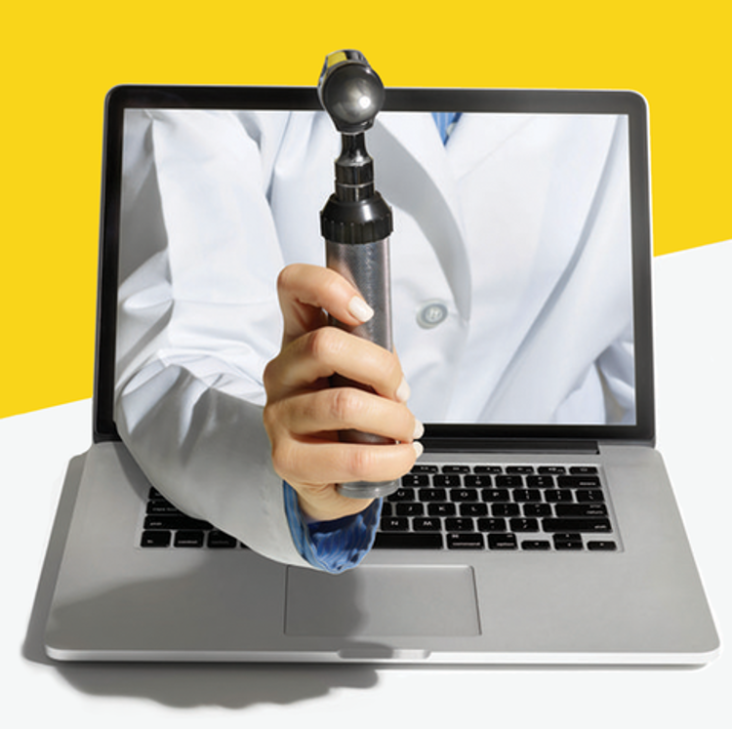Seeing a doctor digitally is on the rise, but should you?
Getting to the nearest high-risk pregnancy specialist was an ordeal for Tara Perez, a 35-year-old with type 1 diabetes. Tara lives in Cartersville, GA, a small town that can be up to three hours from Atlanta during rush hour. Because of her condition, it was critical for her to see this doctor regularly.
Fortunately, Tara’s local ob/gyn teamed with an Atlanta telehealth company, so every few weeks when she went for her checkup, she was also able to video-chat with maternal-fetal doctor Anne Patterson, M.D. Skipping the long-distance drive meant that the appointments didn’t take much time away from Tara’s home fragrance consulting business. Most important, it allowed her to have top-notch medical care.
The ability to offer specialty medical care outside of a big city is a key reason that telehealth (sometimes called telemedicine) has taken off in recent years. What’s fueling the surge: increased access to health care and improvements in technology, such as a secure flow of information. These allow health care providers to do things they couldn’t 25 years ago, like get near-instantaneous results for ultrasounds, EKGs, and other tests.
What a virtual appointment is like
Last year, some 7 million Americans accessed a doctor via a screen. The number of these live video appointments grew sixfold from 2015 to 2018, according to Rock Health, a fund that invests in health technology companies, and is expected to keep rising. At the same time, stores like Walgreens, Rite Aid, and CVS are starting to offer urgent-care video link-ups in some locations.
While insurance reimbursements for remote treatment vary from state to state and plan to plan, some 96% of large companies offer a telehealth benefit to employees.
Patients who have established relationships with doctors or therapists may prefer to download an app to talk to them rather than fight for an appointment. For other patients, the key is saving time—and not missing out on earnings to head to an in-office appointment.
Beyond convenience, research shows that telehealth can be as effective as in-person doctor visits. When 50 multiple sclerosis patients in a University of California study saw a new-to-them neurologist via video, all said their appointment satisfied their goals (e.g., understanding test results or adjusting meds), and three avoided a trip to the ER because the doctor was able to assess and treat them remotely.
When technology isn’t enough
Of course, there are situations in which telehealth is not appropriate. If you’re having an asthma attack or a cardiac emergency, for example, you should head to the ER, and some less dire conditions are also better diagnosed in person. In some remote situations, both physicians and patients may find the distance hard to bridge. “If someone we’ve been helping loses a pregnancy, the doctor can’t reach through the camera to give them a hug,” Mack says.
Is telehealth the future?
With access to the technology and a little practice, though, doctors say they can usually give their patients what they need. Instead of bedside manner, “we call it ‘webside manner,’” says David Mishkin, M.D., medical director of Baptist Health’s telemedicine program. “Doctors are beginning to see that this is part of the future for improving access and expanding the delivery of health care,” Dr. Mishkin says. If it offers patients quality care at an affordable price, it’s a future we can all embrace.
Read full Article: https://www.prevention.com/health/a29490042/what-is-telehealth/


